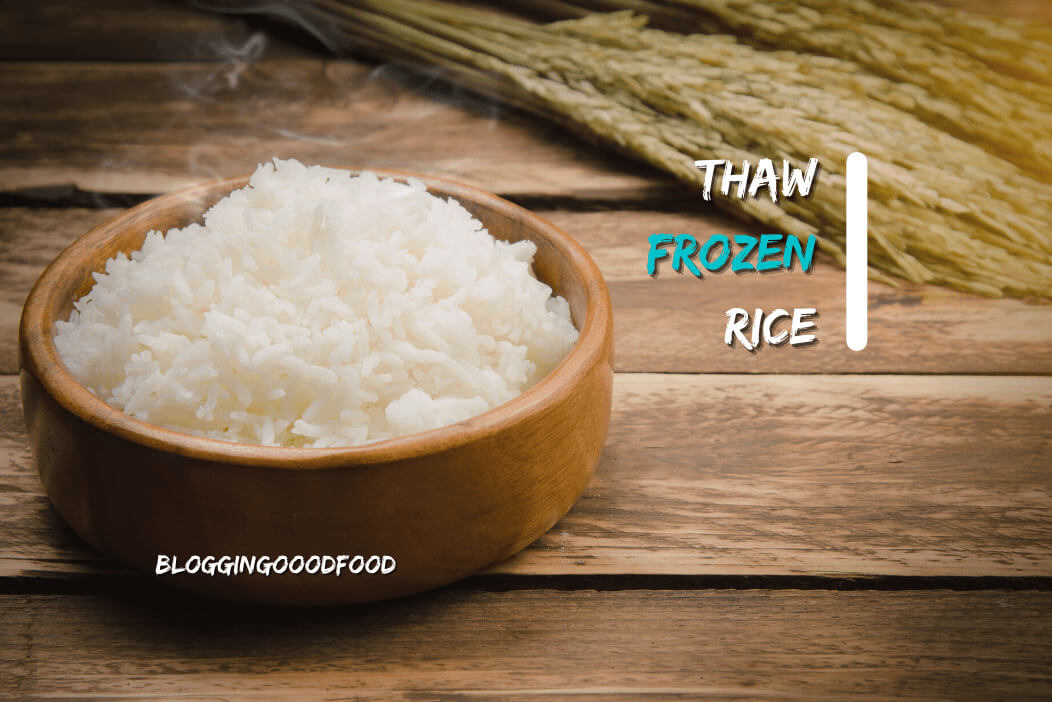Using a freezer to keep food that has already been prepared may make preparing speedy meals a breeze. It may be a surprise to learn that not all frozen food sources defrost similarly. For instance, a little extra effort is required to safely defrost the rice while simultaneously preventing the growth of bacteria.
You have arrived at the right site if you are interested in learning how to properly defrost frozen rice to allow it to maintain its original texture while retaining its moisture content. In this piece, we will go over three distinct approaches to thawing rice from the freezer.
Table of Contents
3 Quick Methods to Thaw Frozen Rice:
If you are pressed for time, you can thaw the rice in the microwave. The frozen rice will take one to two minutes to melt in the microwave.
With this procedure, not only is the rice preserved for longer but it is also protected against the effects of bacterial growth. Because it is easy, quick, and quick to apply, this approach is the one that is suggested the most out of all the others.
Method 1: Thawing in Refrigerator

Take your rice out of the freezer and place it in the refrigerator to keep it fresh. If you are defrosting more than one box at a time, divide them equally throughout the shelf instead of stacking them on the frame. This allows for a quicker and more uniform thawing process.
Examine test samples after a period of 12 hours or the following day. If any significant clumps of rice are still frozen, you may hasten the defrosting process by breaking them up with your fingertips.
At this point, the rice is ready to be consumed and can be reheated using any manner you choose. Large chunks will often not entirely thaw, but you may speed up the process by breaking them up into smaller pieces and storing the individual components in separate bags or containers after you have broken them up.
After another eight to 12 hours, re-test the rice using more significant pieces this time. It may be used immediately if it has been thawed or there are only a few little frozen areas.
To guarantee that the rice is safe to eat after it has been thawed, either reheat it to a temperature of 165 degrees Fahrenheit or label it with the date it was melted and use it within three to four days.
Method 2: Thawing in Microwave

Take out of the freezer whichever piece or portions of rice you will be using. If it has been stored in a container that can be heated in the microwave, the lid should be removed, and any built-in vents should be opened. It is necessary to remove the plastic wrap from the bagged parts before placing them in a bowl or dish that can be heated in the microwave and has a lid or a bowl covered with plastic cling wrap.
You can set your microwave to the “Defrost” or “Thaw” option, but if you’ve discovered that these settings don’t function reliably on your microwave, you may set it to the “50% Power” setting instead.
Rice should be cooked in the microwave using this lower power level for two to four minutes for each little amount and up to ten minutes for each big one. You should check on your rice every two minutes and open the door. You should stir it regularly and break up any large clumps of frozen food to ensure it thaws evenly.
Take the rice out of the microwave when it is almost wholly defrosted but still has a few frozen parts. Ten minutes should pass with the dish covered as it rests. This gives the rice the opportunity for its temperature to become uniform throughout, guaranteeing that it will cook evenly.
Method 3: Thawing Under Water

Take out of the freezer whichever piece or portions of rice you will be using. As a backup line of defense against unexpected leaks, place each piece in its unique bag that may be sealed with a zipper if you are unsure whether the packing is waterproof.
Put a big saucepan or mixing bowl in the sink and scatter the rice parts all over the basin in a disorganized manner. After adding some ice-cold water to it, turn the faucet so that only a trickle of water goes into the bowl.
If you are defrosting numerous servings at once, you should check on the rice every 20 to 30 minutes and rearrange the packets each time. Rice that is fluffy and has long grains can defrost in as little as half an hour, while rice that is thick and has more moisture can take significantly longer to defrost.
When the rice has almost entirely or entirely thawed, take it out of the water bath it was in. Remove any moisture from the packing, then either reheat the rice right away or place it in the refrigerator for a short period while you prepare the remainder of the dinner.
Rice that has been thawed using the water technique must always be utilized on the same day to reduce the likelihood of getting sick from foodborne illness.
Frequently Asked Questions:
Can cook rice be frozen?
Rice that has been prepared and then frozen may not have the same texture or flavor as freshly cooked rice. Prepared rice should be allowed to cool down thoroughly before being stored in the freezer. A six-month supply of cooked rice may be kept in the freezer.
Can you freeze fried rice?
You can freeze fried rice! It’s a great way to save leftovers and enjoy a quick and easy meal later. Place the fried rice in a freezer-safe container and store it in the freezer for up to three months. When ready to eat, reheat the rice in the microwave or stovetop. And that’s it! You’ll have delicious, homemade fried rice any time you want it. Enjoy!
How long can you freeze cooked rice?
You can freeze cooked rice for up to six months. Be sure to store it in an airtight container, so it doesn’t become dry or burn freezer. The rice should be thawed in the refrigerator overnight before being reheated in the microwave or stovetop.
Bottom Line:
Like any other leftovers, frozen rice must be warmed to a safe minimum temperature of 165 degrees Fahrenheit before consumption. Check your work using an instant-read thermometer to be sure it was done correctly. If you’re reheating rice in the microwave, ensure the entire serving reaches a safe temperature by checking it at multiple points and stirring it in between.







